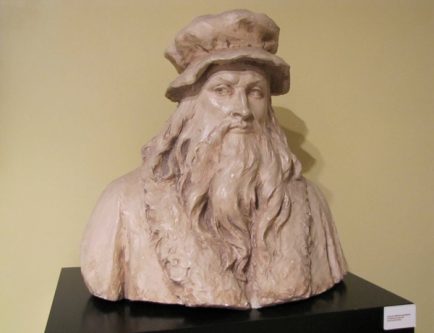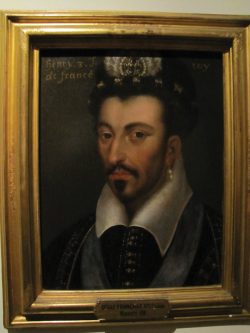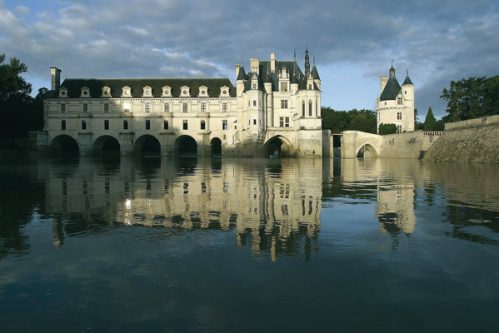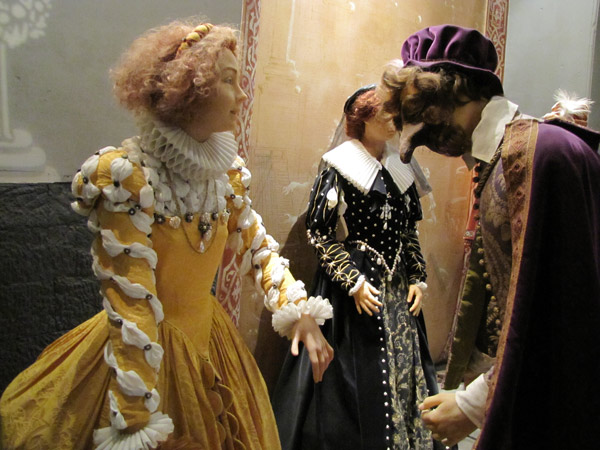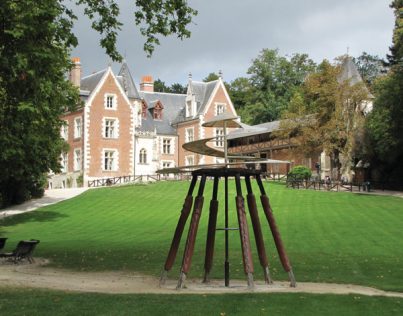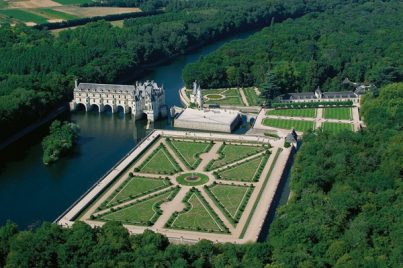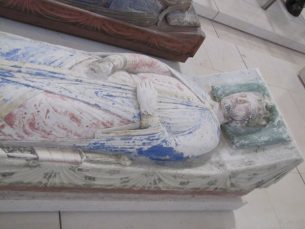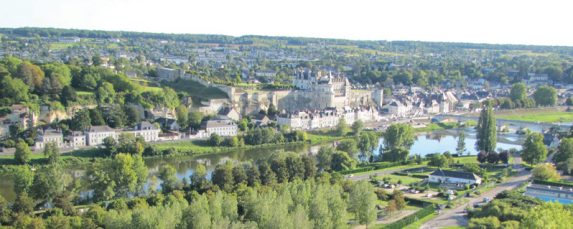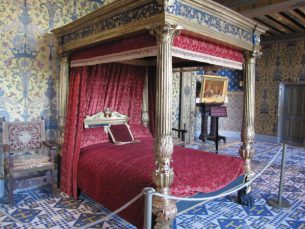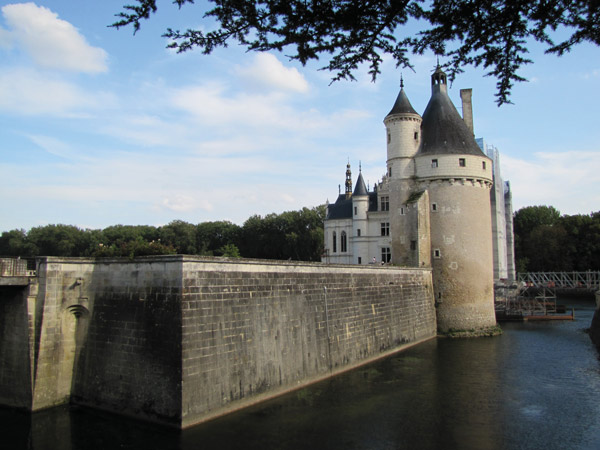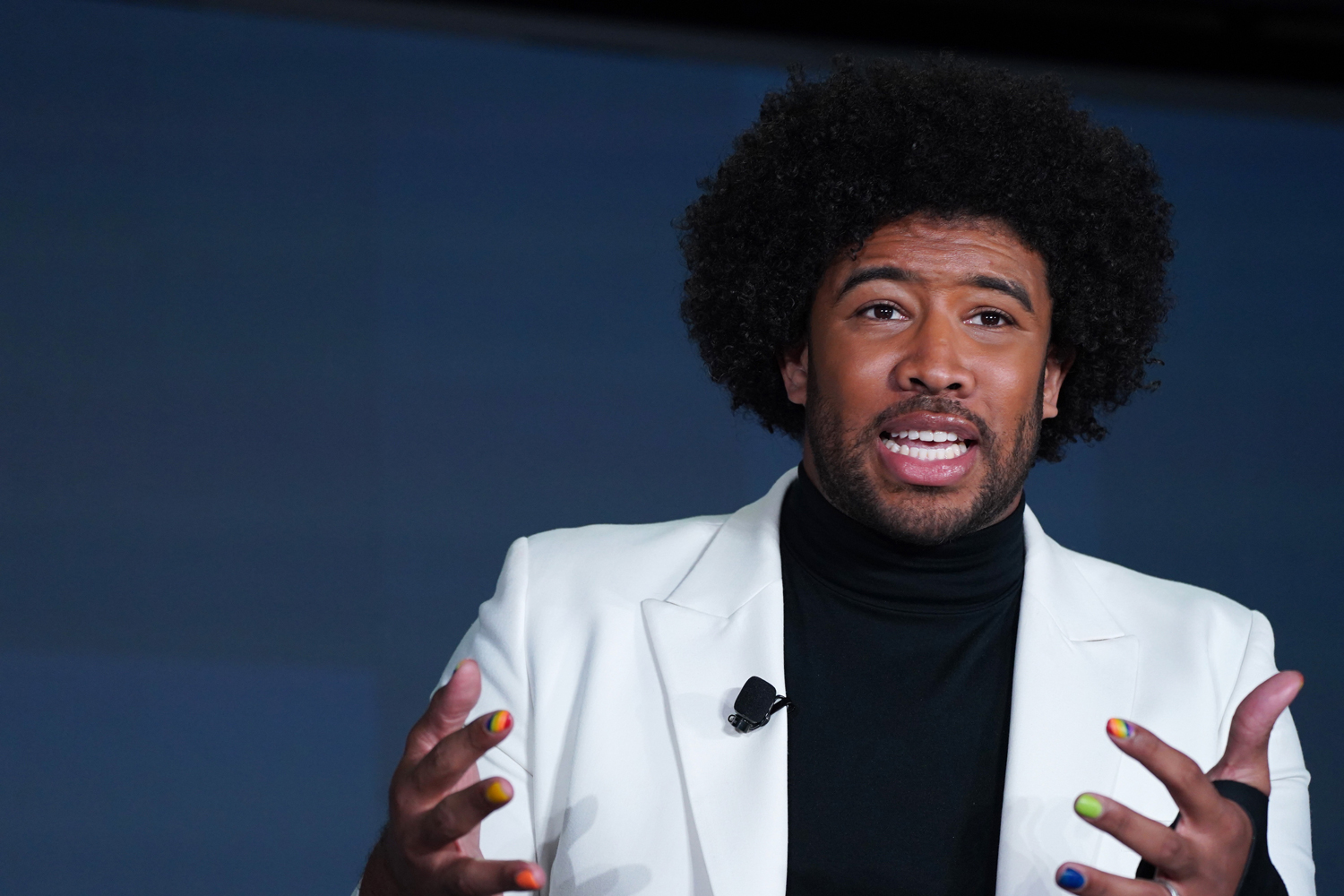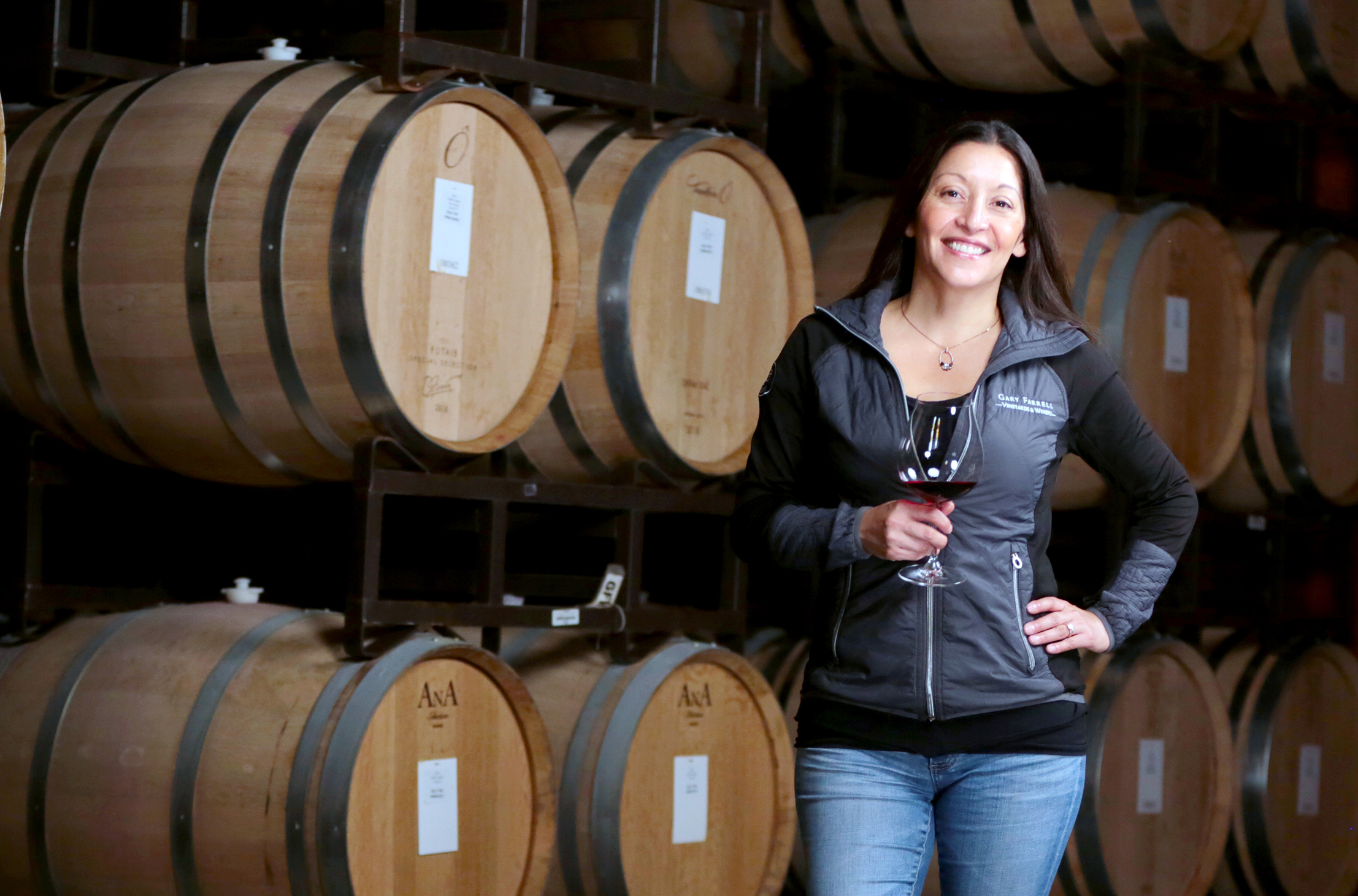The beautiful Loire region was once the hub of French royal life, and thus is home to some 300 châteaus and other grand structures. Among them stands Fontevraud Abbey, and when you stand in the abbey in front of the portrait of Eleanor of Aquitaine, you can almost hear her saying, “Such, my angels, is the role of sex in history.”
The line actually belongs to Katharine Hepburn, who said it when she played Eleanor so memorably in the medieval soap opera The Lion in Winter. But at Fontevraud, there are 800-year-old paintings of the actual Eleanor, her estranged husband, King Henry II of England and their son, King Richard I. He’s better known to the world as Richard the Lionheart — and he very well may have been gay.
Surely sex has changed the course of history, but what about gay sex? Are there historical traces of that, too? And, if so, can they still be found in the Loire — perhaps even here at Fontevraud, Richard’s final resting place?
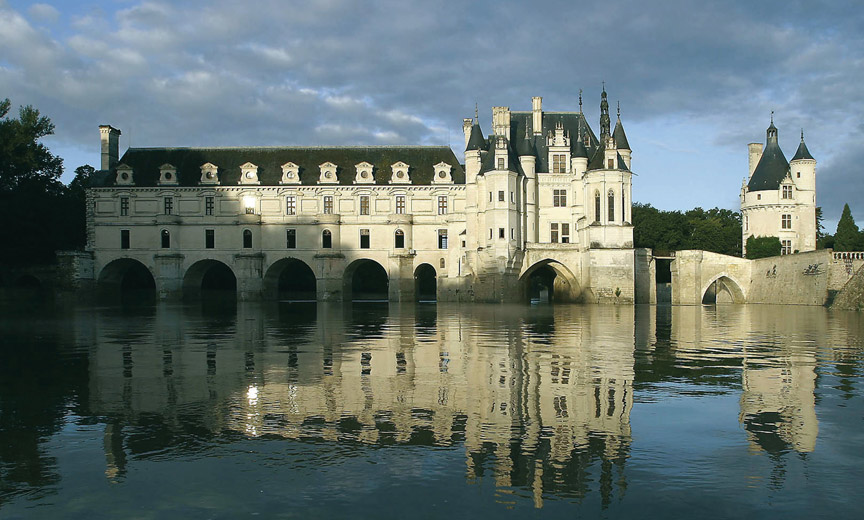
Château de Chenonceau, where Catherine de’ Medici threw cross-dressing balls,
and raised the likely-gay Henri III.
One might wonder how such an iconic English king ended up buried so deep in France. As part of the Plantagenet dynasty, Richard’s territory covered not just England, but also the western half of modern day France.
This division had put the Plantaganets at odds with the rest of France. But in 1187, Richard defied convention and established a relationship with his father’s bitter enemy, the young French King Phillip II. Their bond blossomed, and the duo would go on to lead the Third Crusade together. At the time, it was written that the men “ate every day at the same table and from the same dish, and at night their beds did not separate them.” That Richard was later accused of “Sodom-like behavior” lends further credence to the notion that the two were lovers.
What kind of clues about Richard’s sexuality can be found at Fontevraud? His grave itself, though striking, doesn’t appear to give up any secrets, though perhaps its placement does. The obviously female vault next to Richard’s belongs to his sister-in-law, not his wife. His wife is buried 62 miles away — because he didn’t like her very much.
More Content from MetrosourceEven the staff of Fontrevraud is surprisingly forthcoming on the subject of Richard’s sexuality. “Oh, he was gay,” one of them confirms nonchalantly. “There’s no doubt about that.” This seems like a fairly revolutionary travel phenomenon: Once painstakingly hidden, gay history is now just another thread in the rich fabric of history on display in the Loire.
A Secret Passageway to a Great Master
About 60 scenic miles up the river and a few centuries later, the final chapter of a preeminent gay forefather begins. Artist, inventor, scientist, architect and true Renaissance man Leonardo da Vinci came to the picture-perfect town of Amboise in 1516 at the invitation of his new patron, King Francis I.
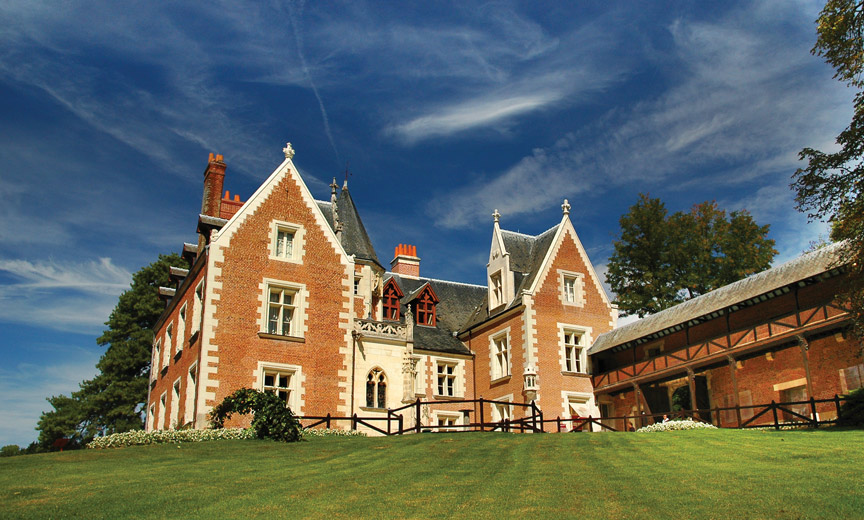
Château du Close Lucé in the Loire Valley: When it was the 16th-century residence of Leonardo da Vinci, it was called Château de Cloux.
The 64-year-old da Vinci famously made the journey over the Alps from Italy on the back of a mule, bringing with him three of his most cherished paintings, including the famed Mona Lisa. In Amboise, Francis gave da Vinci use of the Château de Cloux, where the master was “free to think, dream and work” — primarily on science, philosophy and architecture, though he may have also put a few final touches on some of his last paintings here.
Young King Francis lived about a quarter of a mile away in the grand Château Royal d’Amboise, but used an underground passageway connecting the two châteaus to meet up with da Vinci whenever he liked. This may have been because Francis merely delighted in da Vinci’s company, though some have suggested that the meetings may have involved more intimate pursuits. However, the four-decade age difference between the men makes it more likely that Francis would have looked elsewhere for such gratification.
Read Next | How Much Do You “Really” Know about Stonewall History?
However, gay activity almost certainly went on between others during da Vinci’s residence at Château de Cloux. Accompanying the master on the journey to Amboise were his two favorite assistants, Gian Giacomo Caprotti and Francesco Melzi, both of whom were likely also his lovers. Caprotti, the elder of the two, had been with da Vinci for more than 25 years, earning the nickname “Salai” or “Little Devil.” Art scholars believe that Salai may have even served as the model for the Mona Lisa.
Château de Cloux became Château du Clos Lucé in the 17th century, and it now serves as a fascinating multidimensional da Vinci museum. The master’s bedroom has been lovingly restored, and the basement is filled with 40 quirky models constructed from his original designs. Outside, an accompanying park holds 20 giant working da Vinci machines, including his helicopter and tank models, and “Leonardo’s Garden” has been created according to his botanical studies.
After three years at Amboise, da Vinci passed away in 1519. He was so deeply mourned by Francis that the grief was memorialized in paintings centuries later — most notably in Jean Auguste Dominique Ingres’ The Death of Leonardo da Vinci, which depicts the king passionately embracing the dying man. Da Vinci’s tomb now lies in the small but lovely Saint Hubert Chapel on the grounds of Château d’Amboise, the massive royal palace overlooking the Loire where Francis I raised his son King Henri II and Henri II fathered another potential gay forefather.
The Gay Hipster King?
Just 10 miles south is château Chenonceau, considered by many to be the most stunning castle in the entire Loire region. Reached by a long, majestic, tree-lined walkway, the 16th-century Chenonceau actually stretches across the Cher River, and is surrounded by spectacular gardens. It’s often called the “Ladies’ Castle,” for a series of strong-willed women who were responsible for its many transformations over the years.
Not least of these was Henri II’s wife, Catherine de’ Medici. Following the untimely death of her husband, she evicted his longtime mistress from the property and created a grand, river-spanning, Italian style gallery where she held lavish, risqué, cross-dressing-infused balls. Much like Eleanor of Aquitaine, Catherine was a shrewd power broker who would live to see several of her sons become kings, including the controversial young dandy who rose to the throne as Henri III in 1574.
Henri was a highly intriguing figure. He’s cropped up in pop culture over the years, notably in the 1998 film Elizabeth, where he’s seen courting Cate Blanchett’s Queen Elizabeth I of England — until she catches him cavorting in full female Renaissance regalia. “What?!” he demands indignantly. “You stare, Madame. Do you see something strange, perhaps?” In the film, the moment is played for comedy, but if you know more about the complexity of Henri’s situation, it might not be so amusing.
Read Next | This Is How Straight Girls Can Ruin Your Favorite Gay Bars
Henri came to power at a delicate juncture in French history. The monarchy was in shambles, having been led for the previous 15 years by his two sickly older brothers. But Henri’s domineering mother Catherine, the Dowager Queen, had grown accustomed to wielding the real power. When Henri ascended to the throne, critics blamed her for fostering the king’s strong feminine side, claiming that she had deliberately emasculated him in order to better control him.
But that was not the only factor that encouraged rumors about Henri’s sexuality. He loved finery, which seemed like an especially scandalous display while his country was falling apart. Even more troubling was the king’s ever-present retinue of minons — handsome, young male courtiers who copied his style, described at the time as “ostentation, measured, diapered and covered with violet powders and odiferous scents.” Meanwhile, Henri himself seems to have been acutely conflicted, falling into periods of deep despair marked by self-flagellation.
Though Henri eventually married Louise of Lorraine, their marriage failed to produce any children. Nevertheless, she was a devoted wife. When Henri was assassinated in 1589, Louise inherited Chenonceau and went into a state of deep grief, painting the walls of her bedroom black. Today, you can see it restored to its full, creepy, mourning glory; it’s one of the château’s most interesting rooms.
A Man’s Home Is…
However, 30 miles up the valley stands another great spot to look into the history of Henri III, as it was one of his favorite castles: the Château Royal de Blois. Reminders of him are everywhere here, including numerous portraits that make this particular king seem at least a little bit queeny. It’s also one of the most architecturally exciting buildings in the region, as its design incorporates four wings surrounding a main courtyard, with each wing built in a distinct period style.
It can be tricky to separate fact from fiction when it comes to Henri III. Certain historians propose that some of Henri’s eccentricities were exaggerated by his enemies — of which there were many. There’s even an infamous story about Henri luring a rival to the Chateau Royal de Blois to be murdered, and the event is commemorated today by a fairly gruesome painting, displayed near where it allegedly happened. Regardless, Henri was almost certainly at the very least bisexual, and with his distinct signature combo of scruffy goatee and dangly earrings, he’d easily blend into today’s hipster art scene.
We may never know for certain why Henri III enjoyed his drag so thoroughly, whether Francis I met Leonardo da Vinci for secret sex or if Richard the Lionheart and -Phillip II were lovers. But if a trip to the Loire has anything to teach, it’s that these complex relationships between men almost certainly helped shape the course of human events. Such, my angels, is the role of sex in history.
The Loire Valley Destinations Mentioned Here Offer More Than Gay History:
Fontevraud
(abbayedefontevraud.com) also became a prison for a time after the French Revolution, and
you can take special tours highlighting that unique chapter in its history.
Château De Clos Lucé
(vinci-closluce.com) boasts a da Vinci–era restaurant, L’Auberge du Prieuré, complete with period food, setting and costumes.
Château Royal D’amboise
(chateau-amboise.com) presents tours that explore the castle’s underground
passageways and towers.
Château De Chenonceau
(chenonceau.com) holds night walks with classical music in its illuminated gardens.
Château Royal De Blois
(chateaudeblois.fr) is home to over 35,000 artworks, about 300 of which are on display at any given time in its own Fine Arts Museum.
You’ll Want to Stay at a Castle of Your Own as a Home Base for Exploring:
Château De Pray
(chateaudepray.fr) is a 13th-century beauty with a phenomenal restaurant in the little town of Chargé, just two miles east of Amboise.
Château De Chissay
(chateaudechissay.com) is a stunning property just four miles from Chenonceaux where at least two kings once slept (though alas, not together).
Still Itching for More Scandalous History among the Loire Châteaus?
Halfway between Chenonceau and Blois stands CHÂTEAU DE CHAUMONT (domaine-chaumont.fr), where Catherine de’ Medici hosted famous soothsayer Nostradamus before moving to Chenonceau. At the time Chenonceau was occupied by one of Henri II’s mistresses Diane de Poitiers (the Camilla Parker-Bowles of her day); so Catherine sent her packing back to Chaumont.
Centuries later, Chaumont was purchased by sugar heiress Marie Say, an eccentric libertine who (at age 73) married 42-year-old disgraced Spanish Prince Luís Fernando de Orleans y Borbón. The prince was a gay, drug-addicted playboy, who wasted little time in squandering what was left of his wife’s fortune before being expelled from France, allegedly for being party to the murder of a hustling sailor in 1935.
 Read Next | Our List of the Top Gay Bars in New York City
Read Next | Our List of the Top Gay Bars in New York City
Last modified: January 8, 2020


